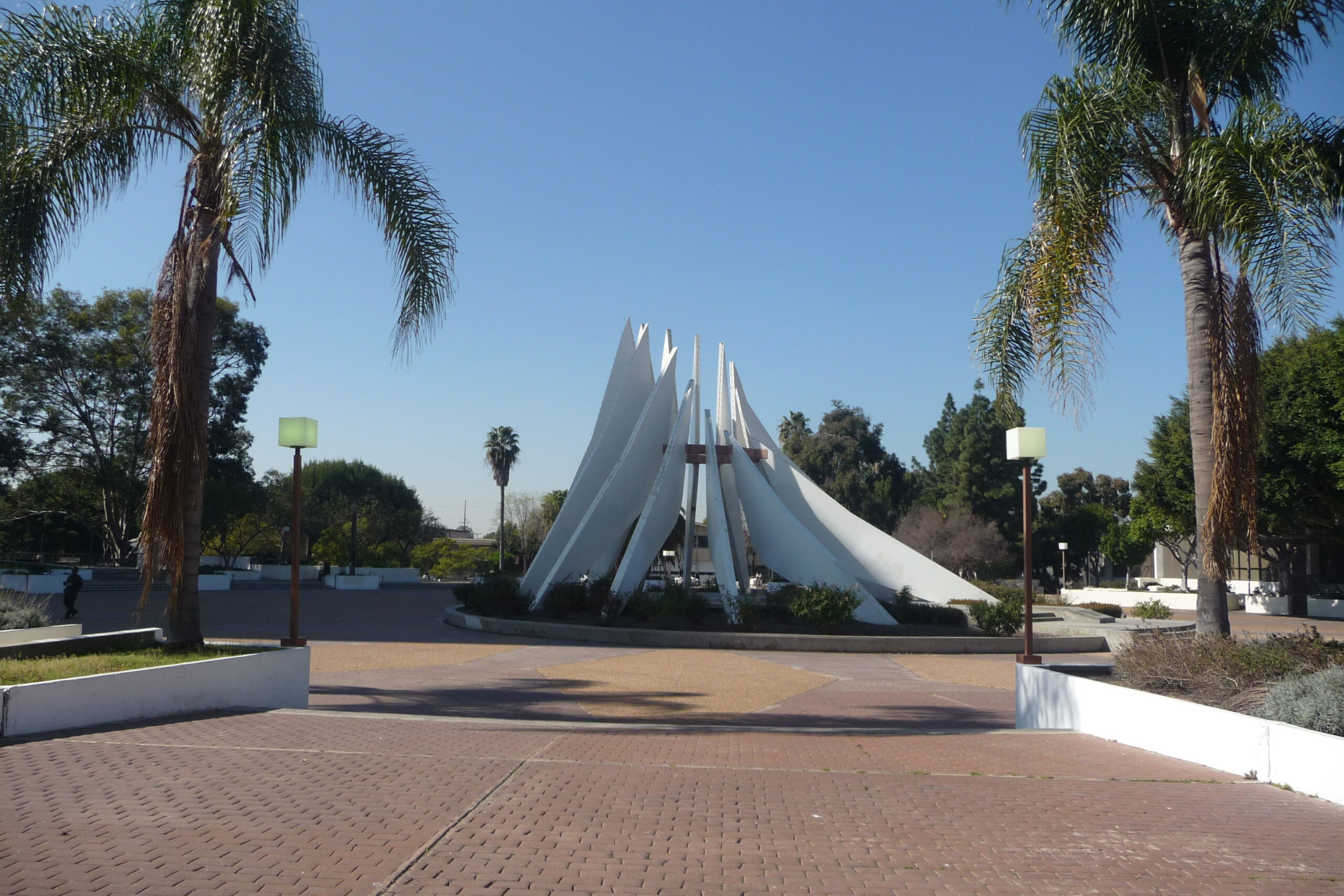
Place
Long Beach Civic Center
Designed by a consortium of local architects, the Long Beach Civic Center is an excellent example of Late Modern architecture and civic planning.


Place Details
Address
Year
Style
Decade
Designation
Property Type
Community

Entry to Civic Center, 2014 | Adrian Scott Fine/L.A. Conservancy
Overview
The Long Beach Civic Center comprises five distinct buildings and landscapes: Long Beach City Hall, the Main Library, the Long Beach Courthouse, Lincoln Park, and the Long Beach Public Safety Building and Police Station.
Although the original Long Beach City Hall was built in 1899, the Civic Center has evolved tremendously over the years. In 1973, the City undertook a major expansion of its municipal facilities in order to better address modern needs. It commissioned a consortium of local firms called the Allied Architects, which recommended a six-block redevelopment project to consolidate all city departments into a unified site. The goal was to establish a true town square and center for community activity. After several years of construction, the new Civic Center debuted in 1977.
Allied Architects was composed of a number of noteworthy modernist firms. Headed by Hugh and Donald Giggs (Gibbs & Gibbs, Architects), its members included Homolka & Associates; Killingsworth, Brady & Associates; and Kenneth S. Wing and Associates. Peter Walker served as landscape architect.
While Lincoln Park and the Public Safety Building have been modified from their original designs, City Hall and the Main Library remain intact and are eligible for listing on the California Register of Historical Resources and as local Long Beach Landmarks. The Courthouse was demolished in March 2016. The Public Library was demolished to make way for the new Billie Jean King Library.
About This Place
About This Place
Completed in 1977, City Hall and the Main Library represented the realization of the 1950s Civic Center Master Plan, which envisioned a modern centralized hub for civic engagement and municipal services. Anchoring the Civic Center superblock, the two buildings are excellent examples of the Late Modern Style with integrated landscaping and reveal the collective efforts of Allied Architects.
City Hall and the Main Library are connected by an open plaza, which was constructed primarily of brick and concrete with a designed modern landscape and ampitheater.
The fifteen-story City Hall building serves as the centerpiece of the Civic Center and opens onto a landscaped plaza. The building was constructed using glass and aluminum and is supported by corner concrete piers. All city departments operate out of the centralized tower. According to Docomomo/socal, the placement of council chambers on the plaza level, wrapped in a glass public viewing area, is “a forward-thinking nod to transparency in local government.”
The two-story Main Library was conceived as a component of the new Civic Center after the city’s 1909 Carnegie Library was severely damaged by fire. The library became an integral part of Lincoln Park and featured rooftop planters and grass berms above reinforced concrete walls to visually connect the modern building to the surrounding landscape. In juxtaposition to the solid concrete massing, large clerestory windows allow natural light to filter into the public spaces.
Though it has evolved over the years, the five-acre Lincoln Park is the oldest park in Long Beach. It was originally known as Pacific Park and was dedicated in 1888. The park served a number of functions over the years and was officially renamed in 1920. In 1964, the City added a Japanese garden to the park as a nod to Long Beach’s sister city, Yokkaichi, Japan.
The Civic Center also contains two buildings that were developed prior to the 1970s redesign. The Long Beach Public Safety Building and Police Station (400 West Broadway) was built between 1958 and 1960 and designed by Francis Heusel, Wing & Wing, and Killingsworth, Brady & Smith. The Courthouse (415 West Ocean Boulevard) was completed in 1960 and designed by Francis Heusel and Kenneth S. Wing.














